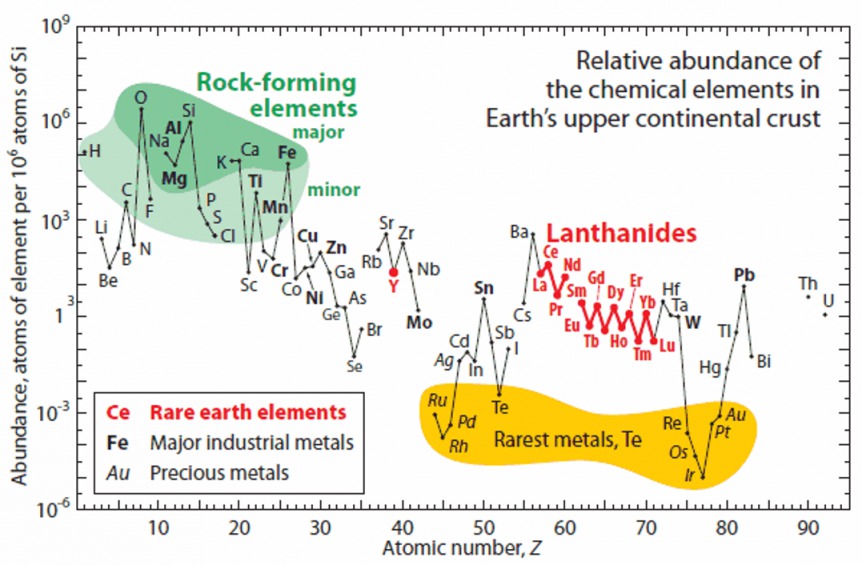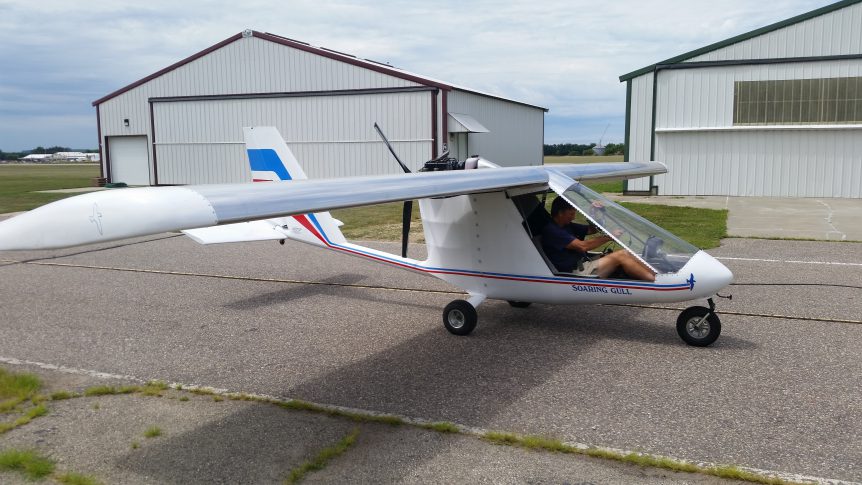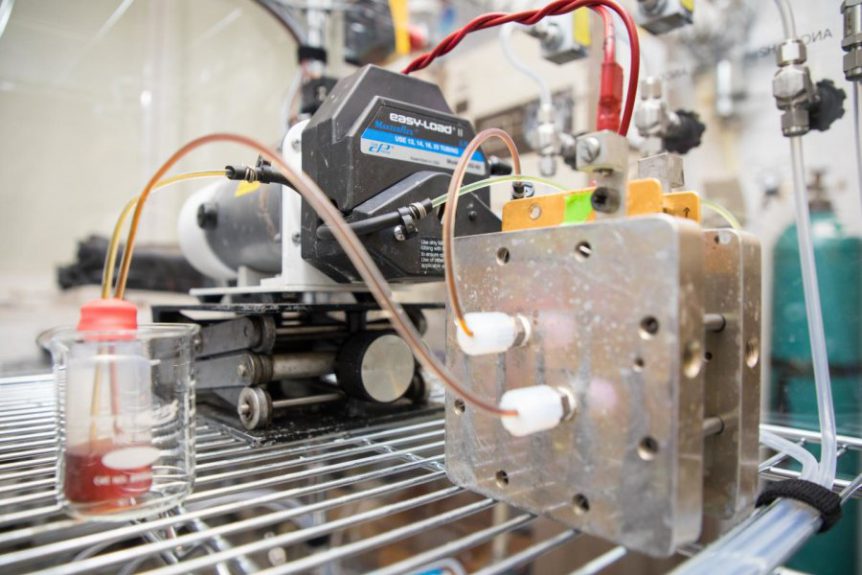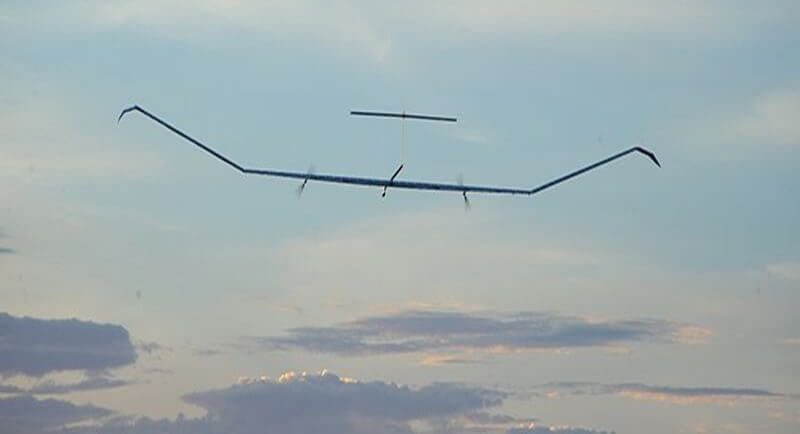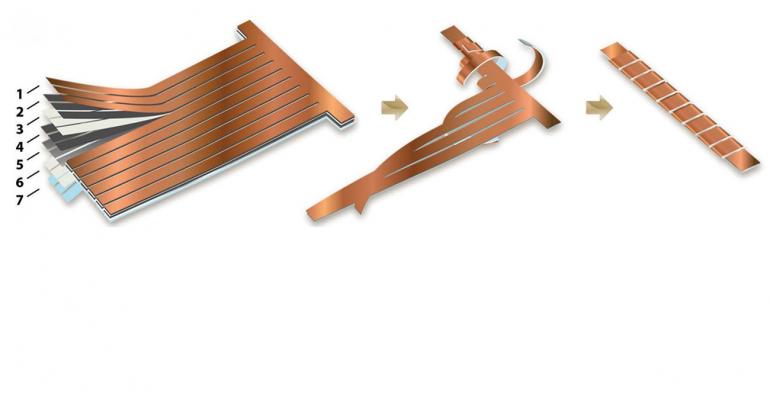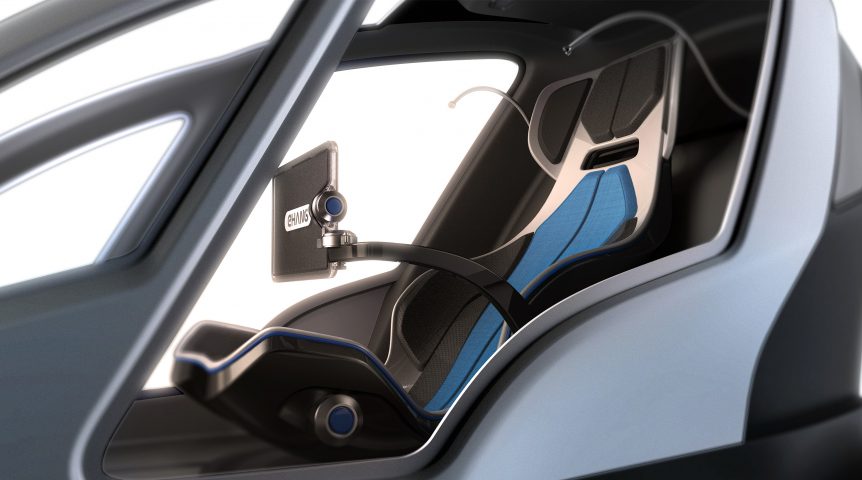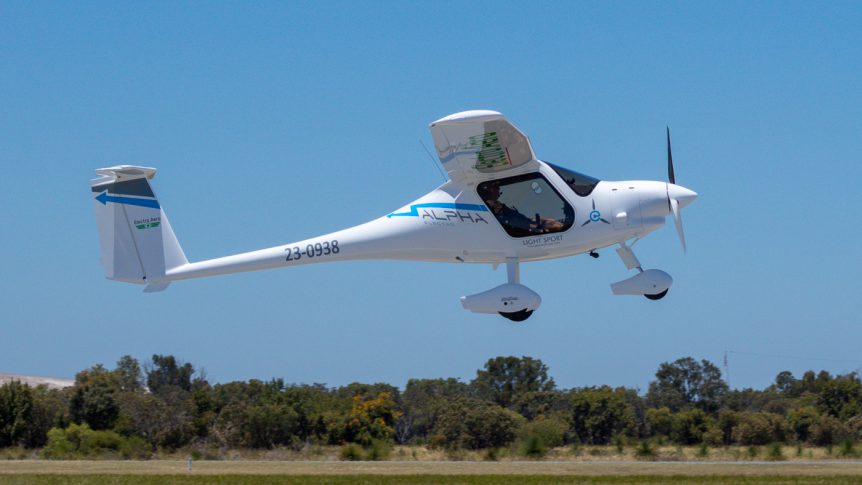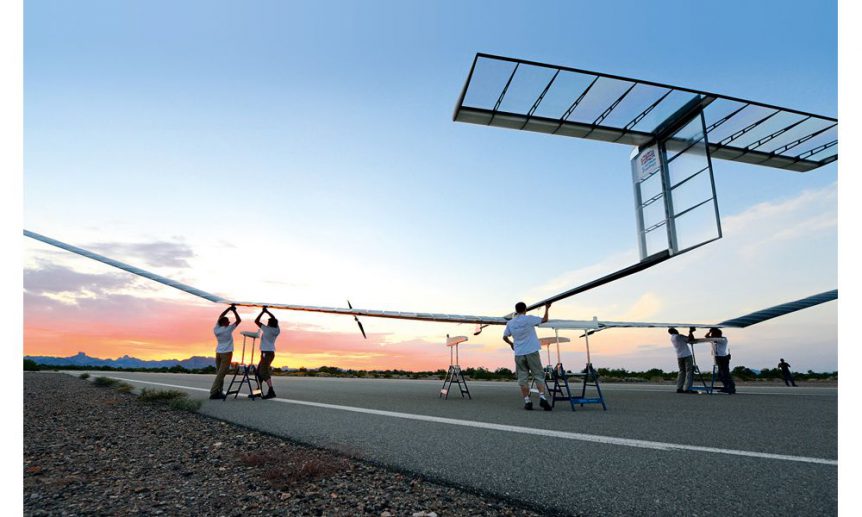NASA is investigating “the integration of nanoelectrofuel (NEF) flow batteries with rim-driven electric motors to produce a safe, clean and quiet propulsion system for aircraft,” according to Aviation Week. That is the promise of an early-stage rechargeable liquid battery technology under investigation by NASA. The agency is researching the integration of NEF flow batteries with rim-driven electric motors to produce a safe, clean and quiet propulsion system for aircraft. The rim-driven motors are used on boats as thrusters, and may have applications on small unmanned aircraft, although researchers have seen disappointing results so far. Tying these motors to more promising research into” non-explosive energy storage technology” is part of NASA Armstrong Flight Research Center’s Aqueous Quick-Charging Battery Integration for Flight Research (Aquifer) project, along with NASA Glenn Research Center’s co-principal investigation. A spin-off of research at Argonne National Laboratory and Illinois Institute of Technology, Influit Energy has “developed a novel type of rechargeable battery that features active energy-storing materials in …
Coots and e-Gulls at Oshkosh
Lead image shows Mark Beierle in the Soaring Gull of his design with which he accompanied Richard Steeves to Oshkosh. As many readers know, Richard Steeves, a physician and teacher at the University of Wisconsin – Madison is also a builder and long-time advocate for an amphibious aircraft called the Coot. He publishes the Coot Builders Newsletter and stages a recurring AirVenture event, a yearly get-together of fellow Coot builders. Recently, he got into electric aviation and has built and flies Bravo, an e-Gull designed by Mark Beierle. Richard’s newsletter now features articles about amphibians and electric flight. Mark showed up at Richard’s hangar at the Sauk Prairie Airport, a lovely stretch of green bordered by hangars and bisected by a concrete runway pointing south toward Madison and north toward the Wisconsin Dells. Beierle “worked very methodically and precisely to optimize Bravo beyond my dreams,” according to Richard. The Coot Builder’s Newsletter reports, “Mark Beierle showed up at the Sauk …
Flow Batteries Aging Well
As previously noted in the blog, the Tissandier Brothers flew their Siemens-powered electric airship in 1883 using a flow battery of their own design for energy storage. This technology gets a lot of attention for grid-based energy storage, but might have use in more mobile applications. Nano Flow Cell Technologies in Switzerland, for instance, used different salt waters to power their Quant and Quantino automobiles. Howard Handelman, a regular reader of the blog, shared the following two researches into modernizing flow cells. Stanford and Harvard researchers both cooked up different ingredients than one would normally find in a flow battery. Both groups achieved better than average performance and longevity. Stanford’s Liquid Metal Approach Stanford’s battery uses liquid metal that more than doubles the maximum voltage of conventional flow batteries. Things happen at normal temperatures, unlike flow batteries that need extremely high temperatures. The metals used are low-cost and non-toxic, unlike the dangerous fluids used in other flow batteries. William Chueh, …
Peter Sripol Groundloops – But Check Out Those Motors!
Peter Sripol is a high-energy model-airplane tester who put a twin-motor electric biplane together out of Home Depot/Lowes parts and flew it successfully. That was a back of the envelope design that flew nonetheless. Peter did something a little more professional for his second go-round, crafting some professional-looking drawings. Don’t look for any drawings for the earlier machine, he cautions, explaining there are none He also wanted a pair of larger, slower turning propellers to move a large volume of air more slowly than the Rotomax 150s installed on the biplane. He notes he’s looking for a lower kV (turns per Volt input). Peter works with Flite Test, a model airplane outfit seemingly willing to try anything. That includes the giant cardboard twin-motored craft shown in the lead image. He apologizes for not being further along on the project, but notes he took time out to build a tank(!) for a video-game client. Let this be a rebuke to those …
From the CRADLE to the Breakthrough Battery
Hyundai, the Korean carmaker turning increasingly to electric vehicles, has teamed with Ionic Materials, a Massachusetts-based battery developer to work on an innovative solid-state battery. Ionic’s solid polymer electrolyte technology promised to improve battery safety and performance. Liquid electrolytes are often blamed for disastrous battery fires, so the search for a solid-state alternative is one way to counter the problem. Hyundai’s CRADLE (Center for Robotic-Augmented Design in Living Experiences), “corporate venturing and open innovation business,” is investing in Ionic to gain access to the company’s technology, which also supports lithium-ion cells with no cobalt in their cathodes. Reducing or eliminating cobalt in their batteries may be a major incentive for Hyundai. Forbes reports, “Carmakers, such as Germany’s BMW, and electronic gadget makers, such as Apple, are scouring the world for supplies of cobalt, a rare metal that has tripled in price over the past year to $80,000 a ton, with 60% of global supply coming from the bloody Democratic Republic of …
Battery Options for Range and Longevity
Two varying approaches to battery development may hold clues to future directions for energy storage. At the same time, their announcements, promising as they seem, reinforce our cautious attitudes toward how battery performance numbers are presented. PNNL Attacks the Electrolyte Issue According to Green Optimistic, “Researchers from the Pacific Northwest National Laboratory (PNNL) have developed a new formula for battery’s electrolyte solution to enhance its performance unprecedentedly in terms of its service life and storage capacity or an electric vehicle’s range.” The video gives an overview of what it takes to make a battery and hints at the reasons battery research takes so long to give up improved energy storage devices. Unprecedented the development may be, and the promise of a battery with a 7X longer lifespan and two-to-three times longer range than currently-available batteries certainly captures our attention. Its own press release suggests that PNNL researchers are enthusiastic about the longevity of their new chemistry. “When it comes to …
Get a Spine! Flexible, High-Density Energy Storage
The Vertebrate Battery “Prof. Yuan Yang of the engineering school at Columbia University (New York) modeled, designed, built, and fully evaluated a configuration that emulates the spine of vertebrates, while providing 85% of the energy density of a prismatic Li-ion cell with equivalent volume.” According to Power Electronics.com. Professor Yang’s 14-member team, working in the impressively-named Center for Precision Assembly of Superstratic and Superatomic Solids, and inspired by the flexibility of the human spine and its ability to repeatedly endure bending and twisting, designed a battery that emulates the characteristics of what is in essence a structural battery. We know from experience that our backbones can perform some pretty extraordinary twists and turns – witness the supple routines of gymnasts and Cirque de Soleil performers. Our spines are not rigid assemblies, but a complex construction of solid parts (vertebrae), flexible bits between the vertebrae (disks), and a network of wiring (nerves), which transmit signals from our organs and extremities to …
Ehang Flies One and Two Passengers in Surprising Flight Demonstrations
An Executive Perk Unlike Any Other Chinese firm Ehang staged a demonstration of great confidence in its 184 (one passenger, eight motors/rotors, and four arms) autonomous flight vehicle. The CEO and all executive members of the firm, and Guangzhou government officials got rides, with many giving thumbs-up signs during their trips. Hu Huazhi, Founder and CEO of Ehang, fills us in on numbers. Over 150 technicians and engineers worked more than 1,000 days and ran over 1,000 test flights to bring the Ehang 184 to its current level of trustworthiness. Flights held at the Ehang test flight site in Llanyungang City show the founder using stick and rudder to control the machine. Xiong Yifang, cofounder and CMO for Ehang, flew with great enthusiasm while Huazhi notes a previously unannounced two-seater has carried the heaviest passengers, including Zhong Hang, Vice President, and Richard Liu, Chief Financial Officer – with up to 210 kilograms (462 pounds) combined weight. A lighter VP, Tang …
Book Your Perth Alpha Electro Flights for the Early Morning
Two Things That May Not Seem Related at First Recent news that Penrith, Australia was the hottest place on earth was underlined by videos of melting highways. Penrith, a suburb of Sydney, reached 47.3° C (117° F), enough to turn asphalt into a sticky mess and force drivers onto less gummy shoulders. Although over 2,400 miles away, Perth, home to Joshua Portlock’s Electro.Aero flying service, is at roughly the same latitude, and experienced near-record heat this month. Possibly, that accounts for the all-caps caution for prospective flyers: “WE RECOMMEND EARLY MORNING FLIGHTS IN SUMMER FOR THE SMOOTHEST CONDITIONS.” Joshua’s company took delivery of a Pipistrel Alpha Electro, and flew it on January 2, a first in Australian aviation. He and his team are offering two-hour instructional flights in the new aircraft for $220 AUD (about $172 USD). This opportunity to take lessons in an electric airplane will include the benefits of quiet, smooth flight. But heat brings on turbulence, and …
Airbus, Williams Team to Expand Zephyr Program
What’s the HAPS, Guys? Airbus and Williams Advanced Engineering, two heavy hitters with the world’s largest commercial airliner and the world’s fastest formula electric cars, are collaborating on making a light, slow airplane stay up indefinitely. Their memorandum of understanding (MOU) seeks to integrate Williams’ demonstrated abilities with “ultra-lightweight materials, battery technologies and electrical cell chemistries… in… Airbus’ Zephyr High Altitude Pseudo-Satellite (HAPS) program.” Airbus Defense and Space has worked with Sion Power Corporation since 2015 to use Sion’s proprietary lithium-Sulfur (Li-S) batteries for use in Airbus’ Zephyr aircraft. The current Zephyr S is the latest iteration of a series of solar-powered, unmanned aerial systems (UAS) that will fly at 65,000 feet for months at a time. High Over Dubai Airbus and Sion have expanded the Zephyr S’ performance envelope to accomplish a 336-hour flight in 2010, and a climb to 61,696 ft (18,805 meter) over the United Arab Emirates in 2014. Airbus compares the ability of Zephyr to that …

